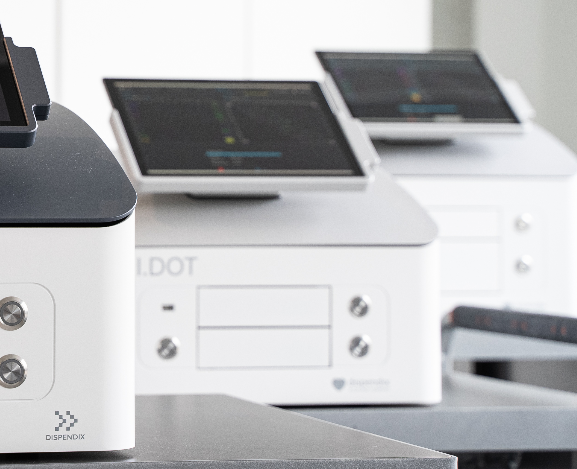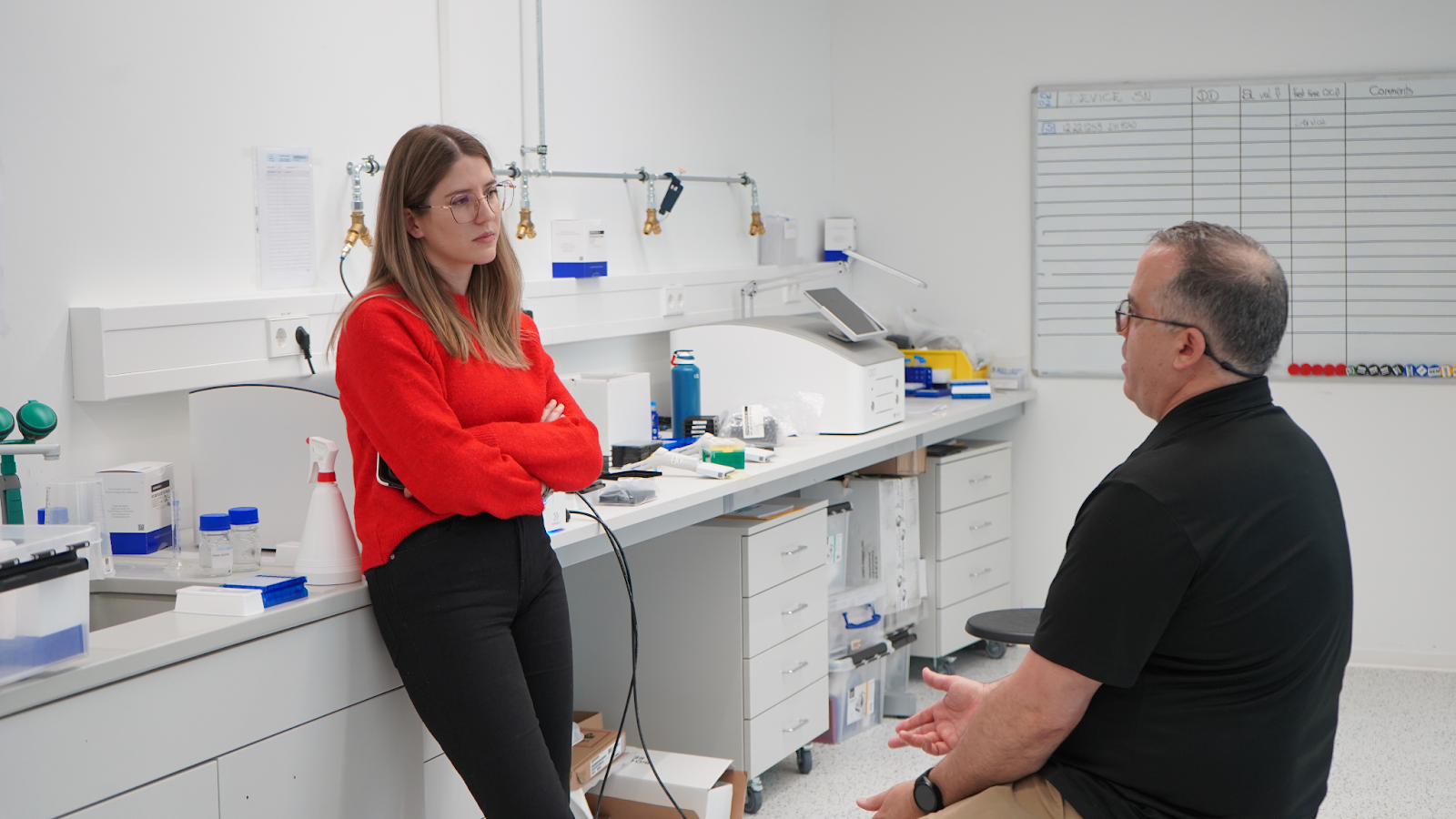Next-generation sequencing (NGS) has revolutionized numerous fields within healthcare and research, such as genomics and diagnostics1. NGS enables researchers to gain novel insights into DNA and RNA sequences with unprecedented speed, accuracy, and cost-efficiency. Despite these advantages, NGS has numerous pitfalls that slow research and waste time and resources. Chief among these is the capacity for pipetting inaccuracies and human error to render downstream data unusable2,3. Fortunately, recent technologies in automation and microfluidics have risen to meet the challenges of modern NGS workflows4.
Here, we explore the challenges associated with NGS workflows and how liquid handling automation has emerged as a game changer, allowing researchers to streamline NGS workflows and generate accurate results within timescales that meet the demands of modern healthcare research.
How Automation Saves You Time and Money in NGS Library Preparation
Automation with the I.DOT Liquid Handler streamlines NGS library preparation by solving issues inherent to previous techniques: cost and time intensiveness. Through precise dispensing and miniaturization capabilities, the I.DOT Liquid Handler minimizes reagent usage, which is particularly important for expensive reagents5. Similarly, the device supports scalability even with limited sample volumes. Automation reduces labor costs by increasing experiment throughput, decreasing manual intervention, and mitigating the risks of human error and cross-contamination6.

Contrary to common assumptions, researchers who adopt automated workflows save money in the long run while fostering sustainability by reducing the use of pipette tips7–10. Overall, integrating advanced automation technologies like the I.DOT Liquid Handler enhances operational efficiency, lowers costs, and ensures high-quality results, underscoring its indispensable role in modern NGS workflows (Fig. 1).

Figure 1. The I.DOT Liquid Handler saves researchers money by minimizing reagent use and supports sustainability by reducing the use of single-use plastic.
To discover more about how the I.DOT Liquid Handler can enhance the time and resource efficiency of your NGS workflows, check out our full article on the topic.
How Automation Optimizes Your NGS Workflow
While NGS holds immense promise in healthcare research, its labor-intensive and error-prone nature poses significant challenges8. These challenges are effectively addressed by automation, which streamlines processes, saves time, and ensures accuracy.
The I.DOT Liquid Handler enables fast and precise liquid dispensing, supporting various plate types and formats, while the G.PURE NGS Clean-Up Device automates sample clean-up, which enhances data reliability. By automating up to 80% of the NGS workflow, these tools offer benefits such as increased throughput, improved productivity, and robust data quality. Automation liberates scientists from tedious manual tasks, empowering them to focus on analysis, innovation, and generating transformative discoveries11. After all, that’s what being a scientist is really about (Fig 2).

Figure 2. Automation frees up scientists' time for data analysis, discussing results, and generating new research questions.
To learn more about how integrating automation into NGS workflows can unlock the full potential of your research, be sure to read our recent blog post, which discusses this exact topic.
The Power of Liquid Handling Automation in NGS Sample Preparation
In modern research and healthcare environments, speed and accuracy are top priorities. Whether you’re securing a quick diagnosis to improve patient care or generating results for your next publication, efficiency is king.
The I.DOT Liquid Handler addresses the challenges of NGS workflows by leveraging microfluidics and automation, allowing you to streamline research efforts while ensuring sample integrity and data accuracy. Its batch-processing capabilities support high-throughput NGS experiments, while microfluidics precision minimizes reagent waste and maximizes sample viability, which is especially important for patient-derived samples2. Built-in volume verification and non-contact dispensing technology ensure accurate liquid handling, which in turn leads to accurate data. Ultimately, automated processes eliminate the need for manual pipetting, which is a time-consuming and error-prone process3. This means scientists can generate better results in less time.
We recently wrote an entire blog on this topic, and you can read it here.
Conclusion
As the demand for faster, more accurate, and cost-effective NGS workflows continues to rise, liquid handling automation emerges as a pivotal solution. By addressing the challenges of pipetting inaccuracies, human error, and time-consuming manual tasks, automation streamlines NGS workflows, enhances operational efficiency, and ensures data reliability.
Technologies like the I.DOT Liquid Handler and G.PURE NGS Clean-Up Device exemplify how automation can revolutionize NGS sample preparation, allowing researchers to generate high-quality results within shorter timescales with reduced resource expenditure. Embracing automation in NGS workflows will undoubtedly accelerate scientific discoveries and ultimately improve outcomes in healthcare and research endeavors.
Ready to supercharge your NGS library prep and free up resources for what matters most? The I.DOT Liquid Handler is your key to efficiency and cost-effectiveness. Book a demo today and see for yourself!
References
- Grada A, Weinbrecht K. Next-Generation Sequencing: Methodology and Application. J Invest Dermatol. 2013;133(8):1-4. doi:10.1038/jid.2013.248
- Yin Y, Butler C, Zhang Q. Challenges in the application of NGS in the clinical laboratory. Hum Immunol. 2021;82(11):812-819. doi:10.1016/j.humimm.2021.03.011
- Guan XL, Chang DPS, Mok ZX, Lee B. Assessing variations in manual pipetting: An under-investigated requirement of good laboratory practice. J Mass Spectrom Adv Clin Lab. 2023;30:25-29. doi:10.1016/j.jmsacl.2023.09.001
- Duncombe TA, Tentori AM, Herr AE. Microfluidics: reframing biological enquiry. Nat Rev Mol Cell Biol. 2015;16(9):554-567. doi:10.1038/nrm4041
- Melo MR, Clark S, Barrio D. Miniaturization and globalization of clinical laboratory activities. cclm. 2011;49(4):581-586. doi:10.1515/CCLM.2011.092
- O’Neill MD. Increasing Throughput with Automated Liquid Handling. Genet Eng Biotechnol News. 2012;32(12):18-21. doi:10.1089/gen.32.12.06
- Suckling L, McFarlane C, Sawyer C. Miniaturisation of high-throughput plasmid DNA library preparation for next-generation sequencing using multifactorial optimisation. Synth Syst Biotechnol. 2019;4(1):57-66. doi:10.1016/j.synbio.2019.01.002
- Dahui Q. Next-generation sequencing and its clinical application. Cancer Biol Med. 2019;16(1):4-10. doi:10.20892/j.issn.2095-3941.2018.0055
- Schwarze K, Buchanan J, Fermont JM. The complete costs of genome sequencing: a microcosting study in cancer and rare diseases from a single center in the United Kingdom. Genet Med. 2020;22(1):85-94. doi:10.1038/s41436-019-0618-7
- Bistulfi G. Reduce, reuse and recycle lab waste. Nature. 2013;502(7470):170-170. doi:10.1038/502170a
- Holland I, Davies JA. Automation in the Life Science Research Laboratory. Front Bioeng Biotechnol. 2020;8(571777). doi:10.3389/fbioe.2020.571777